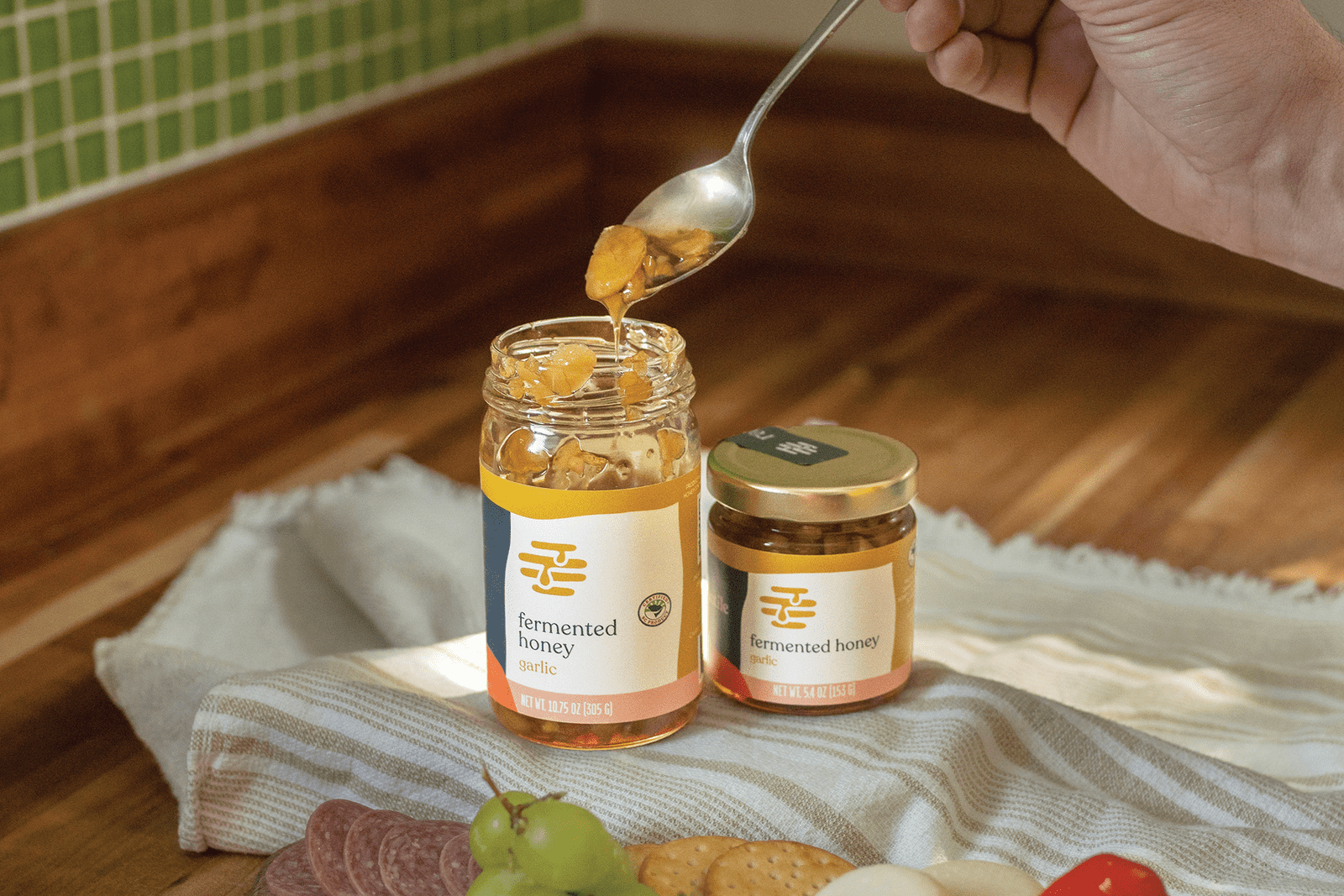
Most honey you find in the grocery store is sourced from all over the world. By the time it makes it into your shopping cart, that little jar of golden nectar may have racked up thousands of food miles and is so far removed from where it was produced, it’s probably impossible to pinpoint the exact farm (or farms) where it originated. Apis Mercantile believes there is a better way to buy and sell honey, one that prioritizes environmental sustainability over profit while supporting the farmers and bees who produce it.
Founders John Berdux and Liam Becker lived together while attending college in Charleston, South Carolina. Berdux credits their group house with planting the seed for Apis. “We weren’t the typical college students,” he says, “we grew muscadines, mint, peppers, and were all committed to different hobbies.” Berdux was inspired to try beekeeping and traveled to Georgia to acquire his very own bees, giving him his first peek into local food systems and the importance of pollinators. But honey was just a hobby at this point. It wasn’t until a couple of years later in 2017 that the two men would come together to create Apis Mercantile.
Apis does not produce its own honey; instead, it partners with small-scale regional beekeepers to bring honey directly from farms to the grocery store. This first-of-its-kind business model connects small producers with larger markets they would not normally have access to, thus expanding their revenue streams. Berdux says the company’s mission is to create a systemic change in the supply chain, one that is focused on regenerative farming, regional sourcing, sustainability, and diversification.
Apis’ newest product, fermented garlic honey, is quickly becoming their most popular. To make it, they combine sliced fresh garlic, wildflower honey, and apple cider vinegar and let it age for at least three months, during which time it starts to ferment and get funky. The result is a spicy and sweet, umami flavor bomb that lends itself to creativity. Berdux attributes its success to its unique versatility: “Chefs love it. It’s something new that people have never seen before. We pride ourselves on introducing a new take on a pantry staple.”
Berdux wants to change the way people think about honey. “When people think of honey, they usually think of it as a sweetener or sugar substitute. But it can be so much more; use it in sauces, salad dressings, cocktails, or as a finishing sauce.”
Pairings
Whipped Feta, Charred Serrano Peppers + Fermented Garlic Honey
Blend feta cheese, charred Serrano peppers, fresh thyme, and a couple of spoonfuls of the fermented garlic honey (including the cloves) for a spread that can go on just about anything. Use it as a condiment for roasted potatoes, as a dip for sliced cucumbers, or just eat it on its own.
Fresh Chèvre, Pimento Peppers, Fermented Garlic Honey + Crostini
Create a tasty appetizer with fresh chèvre on a toasted crostini, topped with a pimento pepper, and a drizzle of the fermented garlic honey. For an extra punch, include a piece of sliced garlic from the honey jar.
Bourbon Barrel-Aged Wildflower Blossom Honey, Cambozola + Sourdough Cracker
This honey is aged for three months in still-wet-with-bourbon white American oak barrels from High Wire Distilling Company in Charleston. The aging process imparts a subtle, oaky bourbon flavor into the delicately sweet orange blossom honey. Try pairing it with a mild and creamy blue cheese like Cambozola and add a glass of bourbon for a decadent after-dinner cheese course.
Hot Honey, Saint Albray + Effies Oatcake
This pairing hits all the notes: sweet, spicy, crunchy, and creamy. The hot honey is infused with Carolina Reaper peppers (crowned the hottest in the world in 2017) from PuckerButt Pepper Company. The spiciness of the honey is tamed by the creaminess of the Saint Albray, and the oatcake adds a rustic crunch.



